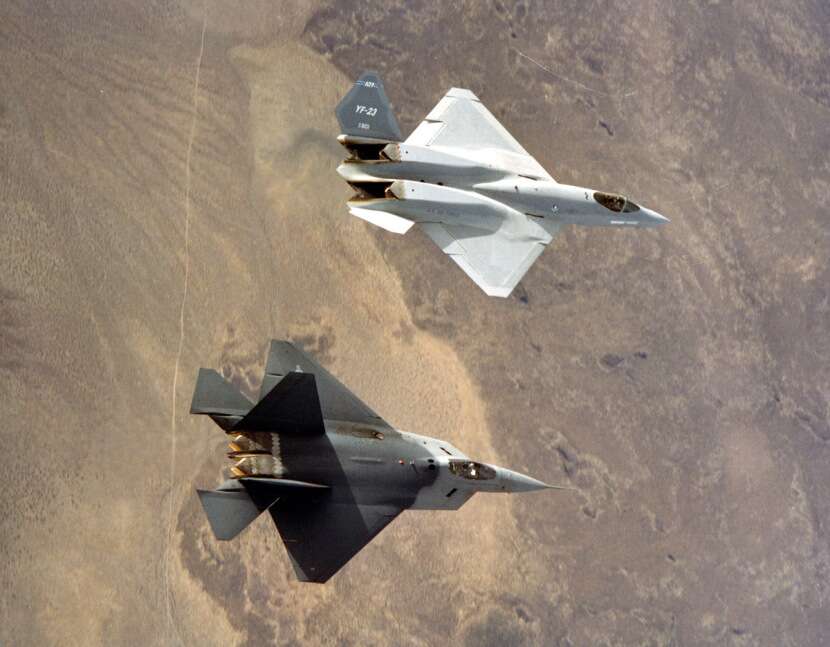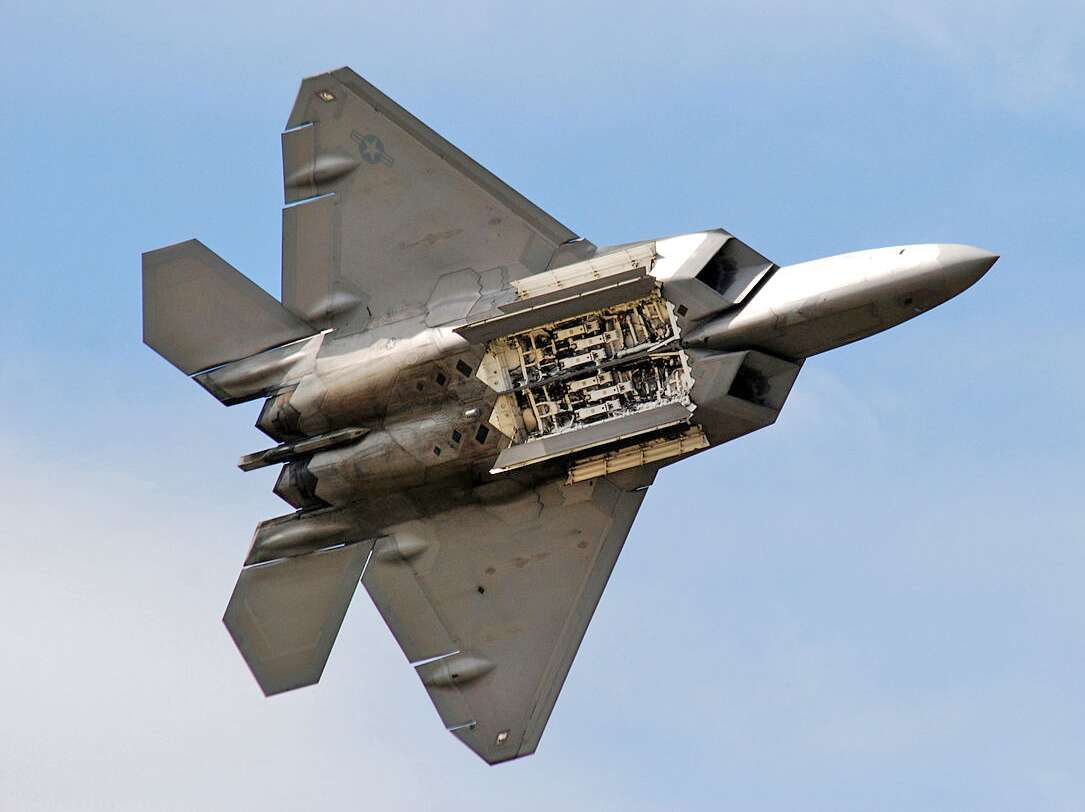Winston
Lorenzo von Matterhorn
- Joined
- Jan 31, 2009
- Messages
- 9,560
- Reaction score
- 1,748
The YF-23's Weapons Bay Layout Was One Of Its Best Features And One Of Its Worst
Northrop's entry into the ATF tender had a big, ambiguous weapons bay that likely hurt its chances of being selected but would be prized today.
3 Oct 2018
https://www.thedrive.com/the-war-zo...one-of-its-best-features-and-one-of-its-worst
As we continue our series on one of the most enigmatic, misunderstood and ahead of its time aircraft in military history—Northrop's YF-23 Black Widow that lost the Advanced Tactical Fighter (ATF) competition to Lockheed's YF-22 Lightning—we turn our gaze toward its unique weapons bay configuration. Like so many things YF-23, this feature had big potential benefits, but it also represented a heightened developmental risk for the USAF. In the end, it very likely damaged Northrop's prospects of supplying America's air superiority fighter of the 21st Century, and maybe for good reason at the time, but today, the YF-23's unique weapons bay configuration would almost certainly be highly prized.
The YF-22 and YF-23 went about carrying their weapons in drastically different manners. The YF-22 featured a fairly straightforward affair, with a shallow weapons bay that spanned its lower fuselage configured to carry four AIM-120 AMRAAMS nestled alongside one another and two small bays that flanked the aircraft's waist—like a wild west gunfighter's belt—carrying a pair of shorter ranged AIM-9 Sidewinders.
The seeker heads on the Sidewinders would deploy into the slipstream at an angle once the side bay doors are open and before locking on and firing off their mounting rail at the enemy. The AIM-120s would be punched out of the ventral bay using a pneumatic trapeze-like vertical launcher. Each missile had its own one of these and could be launched freely regardless of the status of the other missiles in the bay.
A big, deep weapons bay is great for air-to-ground applications, but it does invite potentially unwanted complexity for air-to-air applications. By stacking missiles above other missiles, it means that if one jammed, the ones behind it would not be usable—or worse. It also meant that an elaborate missile handling and launching mechanism would be required. This could add substantial weight and complexity to the design, and thus increase risk and possibly cost associated with it. At the same time, a big, deep, trough-like weapons compartment meant that the YF-23 could potentially carry substantial air-to-ground stores, including 2,000lb class weapons, and possibly even larger. Such a bay could also be subdivided for different types of off smaller weapons to be carried at one time.
The YF-22 had far less air-to-ground potential but it also had none of the YF-23 weapons bay complexities and unknowns, and for what was supposed to be a thoroughbred air-to-air fighter the likes of which the world had never seen, putting a premium on air-to-ground capabilities that may pan out one day was not on the ATF program's to-do list.



Northrop's entry into the ATF tender had a big, ambiguous weapons bay that likely hurt its chances of being selected but would be prized today.
3 Oct 2018
https://www.thedrive.com/the-war-zo...one-of-its-best-features-and-one-of-its-worst
As we continue our series on one of the most enigmatic, misunderstood and ahead of its time aircraft in military history—Northrop's YF-23 Black Widow that lost the Advanced Tactical Fighter (ATF) competition to Lockheed's YF-22 Lightning—we turn our gaze toward its unique weapons bay configuration. Like so many things YF-23, this feature had big potential benefits, but it also represented a heightened developmental risk for the USAF. In the end, it very likely damaged Northrop's prospects of supplying America's air superiority fighter of the 21st Century, and maybe for good reason at the time, but today, the YF-23's unique weapons bay configuration would almost certainly be highly prized.
The YF-22 and YF-23 went about carrying their weapons in drastically different manners. The YF-22 featured a fairly straightforward affair, with a shallow weapons bay that spanned its lower fuselage configured to carry four AIM-120 AMRAAMS nestled alongside one another and two small bays that flanked the aircraft's waist—like a wild west gunfighter's belt—carrying a pair of shorter ranged AIM-9 Sidewinders.
The seeker heads on the Sidewinders would deploy into the slipstream at an angle once the side bay doors are open and before locking on and firing off their mounting rail at the enemy. The AIM-120s would be punched out of the ventral bay using a pneumatic trapeze-like vertical launcher. Each missile had its own one of these and could be launched freely regardless of the status of the other missiles in the bay.
A big, deep weapons bay is great for air-to-ground applications, but it does invite potentially unwanted complexity for air-to-air applications. By stacking missiles above other missiles, it means that if one jammed, the ones behind it would not be usable—or worse. It also meant that an elaborate missile handling and launching mechanism would be required. This could add substantial weight and complexity to the design, and thus increase risk and possibly cost associated with it. At the same time, a big, deep, trough-like weapons compartment meant that the YF-23 could potentially carry substantial air-to-ground stores, including 2,000lb class weapons, and possibly even larger. Such a bay could also be subdivided for different types of off smaller weapons to be carried at one time.
The YF-22 had far less air-to-ground potential but it also had none of the YF-23 weapons bay complexities and unknowns, and for what was supposed to be a thoroughbred air-to-air fighter the likes of which the world had never seen, putting a premium on air-to-ground capabilities that may pan out one day was not on the ATF program's to-do list.




